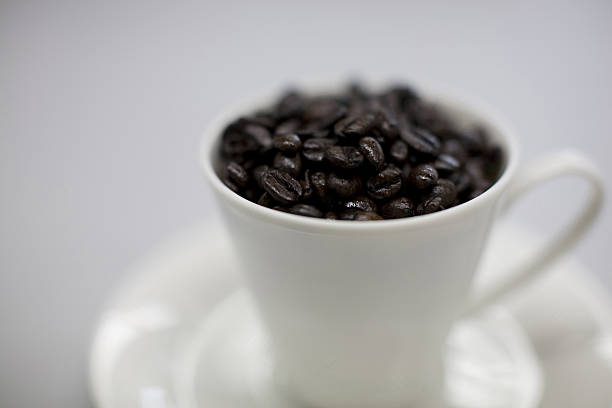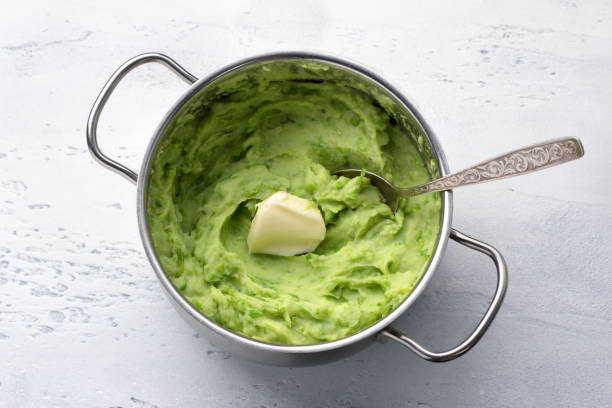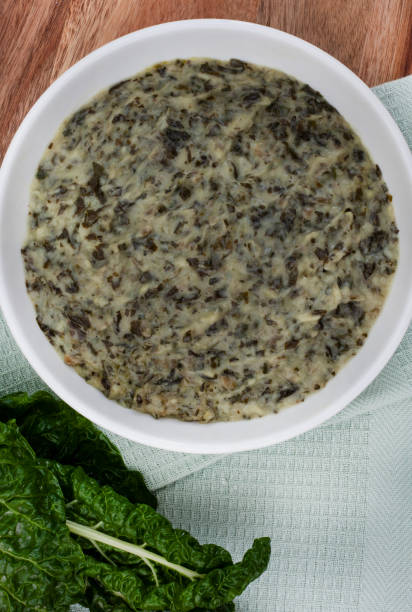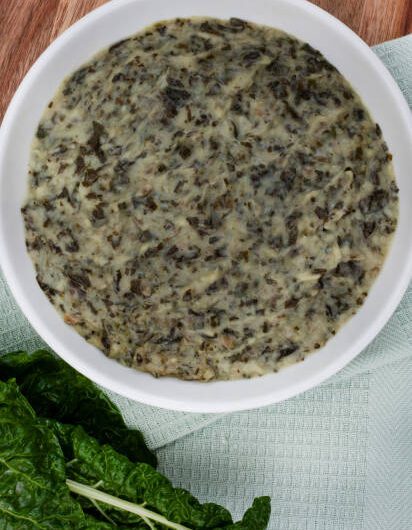Welcome to the vibrant world of Kenyan cuisine, where every dish tells a story of tradition, culture, and community. Today, we’re delving into the heartwarming flavors of Njahi Mukimo recipe, a beloved dish that embodies the essence of Kenyan comfort food.
This kenyan mukimo njahi dish is not only delicious but also rich in protein, fiber, and essential nutrients. Whether enjoyed as a standalone meal or as a side dish, njahi mukimo is sure to satisfy your cravings for authentic Kenyan flavors.
What is a Njahi Mukimo
Njahi, also known as black beans or black peas, are a staple legume in Kenyan cooking, prized for their earthy flavor and nutritional value.
Mukimo, on the other hand, is a delicious mashed dish made from a combination of potatoes, maize, beans of your choice( commonly referred to as githeri) peas, and sometimes pumpkin leaves.
Njahi beans benefits


Rich in Protein
Njahi beans are a great source of plant-based protein, making them an excellent choice for vegetarians and vegans.
High in Fiber
These beans are high in dietary fiber, which promotes digestive health, helps regulate blood sugar levels, and aids in weight management.
Nutrient Dense
Njahi beans are packed with essential nutrients including iron, potassium, magnesium, and folate, which are important for overall health and well-being.
Check out our black bean puree recipe for baby
Heart Health
The fiber, potassium, and antioxidants found in njahi beans can help lower cholesterol levels, reduce the risk of heart disease, and improve cardiovascular health.
Blood Sugar Control
The combination of protein and fiber in njahi beans helps stabilize blood sugar levels, making them a valuable food for individuals with diabetes or insulin resistance.
Best mukimo recipe ingredients
To prepare mukimo wa njahi, you’ll need:
- Dried njahi (black beans)
- Maize kernels or soft corn
- Potatoes, peeled and chopped
- Green peas or dark green leafy vegetables such as stinging nestle
- Onion, finely chopped
- Tomatoes, diced
- Cloves of garlic, minced
- Cooking oil
- Salt and pepper to taste
Cooking Instructions
- Soaking the Njahi: Begin by rinsing the dried njahi thoroughly under cold water to remove any dirt or debris. Then, soak the njahi in water overnight or for at least 6 hours to soften them.
- Cooking the Njahi and Maize: After soaking, drain the njahi and transfer them to a large pot. Add the maize kernels and enough water to cover the beans and maize by a few inches. Bring the mixture to a boil over medium heat, then reduce the heat to low and let it simmer until the njahi and maize are tender, typically for about 1 to 1.5 hours. You can use a pressure cooker to hasten the process.
- Preparing the Mukimo Base: While the njahi and maize are cooking, place the chopped potatoes in a separate pot and cover them with water. Bring the potatoes to a boil and cook until they are soft and easily mashable, about 15-20 minutes. Drain excess water.
- Sautéing the Aromatics: In a large non stick skillet, heat the cooking oil over medium heat. Add the chopped onion and minced garlic, and sauté until they are soft and translucent, about 3-4 minutes. Stir in the diced tomatoes and cook for another 2-3 minutes until they start to break down and release their juices.
- Combining the Ingredients: Once the njahi, maize, and potatoes are cooked, drain any excess water from the njahi and maize mixture. Transfer the cooked njahi and maize to the skillet with the sautéed aromatics. Add the cooked potatoes and green peas to the skillet as well.
- Mashing and Mixing: Using a potato masher or a large spoon, mash the ingredients together until they are well combined and have a smooth consistency. Add salt and pepper to the mixture until it tastes just right, making sure to adjust the flavors as necessary.
- Final Touches: Let the Njahi Mukimo simmer on low heat for an additional 5-10 minutes to allow the flavors to meld together. Stir occasionally to prevent sticking and burning.
- Serving Suggestions: Njahi Mukimo is traditionally served hot as a main dish or side dish alongside grilled meats, stewed vegetables, or Kenyan-style sukuma wiki (collard greens). Garnish with fresh chopped cilantro or parsley for a pop of color and added freshness.


Mukimo cooking tips
- Soak the njahi beans overnight to reduce cooking time and improve digestibility.
- Cook the beans until they are soft but still firm.
- Mash the potatoes thoroughly to achieve a smooth and creamy texture.
- Taste and adjust the seasoning before serving to ensure the perfect balance of flavors.
Substitutions
If you don’t have all the recipe ingredients don’t worry. Here are some substitutes:
- Substite njahi or black beans in english with black eyed peas or black beans. You can also use your left over githeri (corn and beans) for this recipe.
- If you do not have potatoes, use sweet potatoes, nduma or arrowroots and turnips.
- You can also add other herbs or vegetables such as spinach, kale, or carrots for added flavor and nutrition.
Serving suggestions
- Enjoy njahi mukimo with a side of fresh salad or steamed vegetables for a complete and balanced meal.
- Pair it with chapati, ugali, or rice for a satisfying Kenyan feast.
- Drizzle with a dollop of plain yogurt or sprinkle with grated cheese for added creaminess.
How to store njahi mukimo
Mukimo tends to go bad easily.
- Leftover njahi mukimo can be stored in an airtight container in the refrigerator for up to 3 days.
- Reheat gently in the microwave or on the stovetop, adding a splash of water to maintain moisture.
Yes, you can use canned beans for convenience, but be sure to rinse them thoroughly before using to remove excess sodium.
Yes, njahi mukimo is naturally gluten-free, making it suitable for individuals with gluten sensitivities or celiac disease.
While you can freeze njahi mukimo, the texture may slightly change upon thawing.
In conclusion, Njahi Mukimo is more than just a meal—it’s a celebration of Kenyan culinary heritage and a testament to the rich tapestry of flavors found in East African cuisine.
Whether enjoyed with family and friends or savored as a comforting solo indulgence, this dish is sure to warm both body and soul with every delicious bite.
So, why not bring a taste of Kenya into your kitchen today and experience the magic of Njahi Mukimo for yourself? Karibu chakula! (Welcome to the meal!)
Recipe card
Simple Kenyan Njahi Mukimo Recipe
Course: Main dishCuisine: KenyanDifficulty: Beginner4
servings15
minutes1
hour1
hour15
minutesNjahi Mukimo is traditionally served hot as a main dish or side dish alongside grilled meats, stewed vegetables, or Kenyan-style sukuma wiki (collard greens).
Ingredients
1 cup njahi (black beans), soaked and cooked
4 large potatoes, peeled and diced
2 cloves garlic, minced
1 onion, finely chopped
2 tablespoons vegetable oil
Salt and pepper to taste
Chopped fresh coriander for garnish
Directions
- Rinse and soak the njahi beans overnight. Boil the beans in a post until soft. Drain and set aside.
- In a separate pot, boil the diced potatoes until they are soft and fork-tender. Drain and set aside.
- In a big frying pan, warm up some vegetable oil on medium heat. Toss in the minced garlic and chopped onions, cook them until they become aromatic and see-through.
- Add the cooked njahi beans to the skillet and mash them lightly with a fork or potato masher.
- Add the boiled potatoes to the skillet and continue mashing until well combined with the beans.
- Add salt and pepper to the mixture until it tastes just right. Stir in chopped fresh coriander for added flavor.
- Cook the mukimo mixture for a few more minutes until heated through and well incorporated.
- Serve hot as a main dish or side dish alongside your favorite Kenyan accompaniments such as sukuma wiki (collard greens) or kachumbari (tomato and onion salad).
Cooking Tips
- Soak the njahi beans overnight to reduce cooking time and improve digestibility.
- Cook the beans until soft and firm.
- Mash the potatoes thoroughly to achieve a smooth and creamy texture.
- Taste and adjust the seasoning before serving to ensure the perfect balance of flavors.




